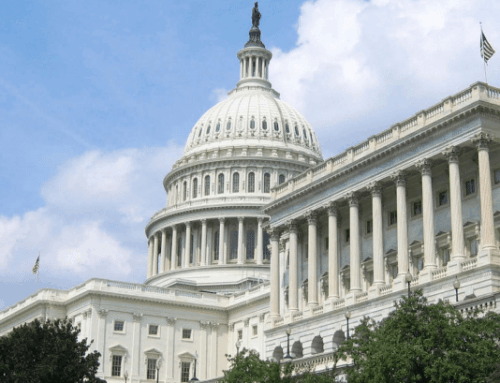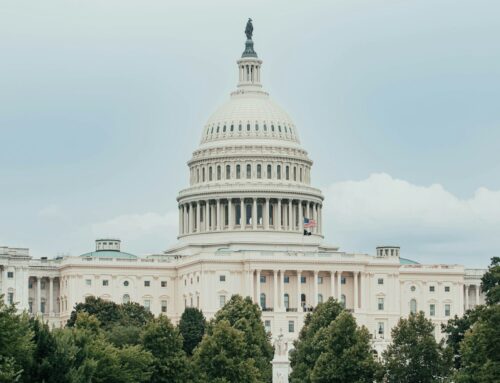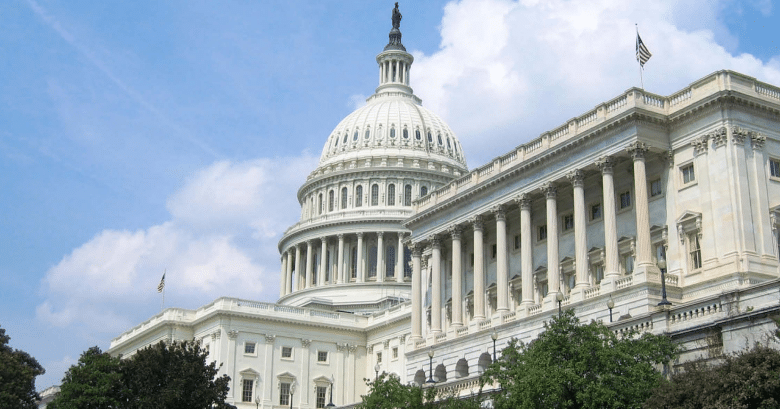On Tuesday, April 1, 2014, Senate Finance Committee Chair Ron Wyden (D-OR) released the version of the tax extenders package that the Committee would be considering. A modified (more bloated) version of the package was approved April 3.
Tax extenders are a hodge-podge of generally narrow interest tax expenditures (breaks) that are only authorized for a year or two. Over the years, the package has grown to include more than 50 provisions ranging from benefits for NASCAR track owners to write offs for race horse owners, from subsidies for film and television production to tax breaks for alternative fuels and biodiesel. In fact, there is a litany of energy related tax breaks that in some cases serve competing purposes.
The Wyden package whittled away some of these breaks, including the one for NASCAR tracks, but more than 40 remain. Since the package was introduced, many of the tax expenditures left on the cutting room floor have been restored in the final Finance Committee package that was approved
In reality, Congress should reject the whole package and concentrate on comprehensive tax reform – if these provisions are worthy, they should be included in the code, if not they should be scrapped. Extending a provision for two years five times costs the same as a ten year provision, but in Congressional budget scoring terms, a two year extension is costed out as just a two year extension, hiding the true cost of provisions that are likely to get extended again. It’s time to end the gimmicks and the games.
Below is a description of each of the provisions in the package. This will be updated with additional TCS commentary and as the tax extender package is amended in the Committee process. TCS commentary is in italics.
Deduction for certain expenses of elementary and secondary school teachers (sec. 62(a)(2)(D) of the Code)
A kindergarten through grade twelve teacher, instructor, counselor, principal, or aide in a school for at least 900 hours during a school year is allowed to deduct certain expenses up to $250 annually in excess of the overall limitation on itemized deductions (above-the-line). These include any expenses paid or incurred for books, supplies (other than nonathletic supplies for courses of instruction in health or physical education), computer equipment (including related software and services) and other equipment, and supplementary materials used by the eligible educator in the classroom.
Estimated cost to taxpayers (FY14, FY15): $257 million
Exclude discharges of acquisition indebtedness on principal residences from gross income (sec. 108 of the Code)
Gross (taxable) income includes income that is realized by a debtor when their debt is discharged (lessened, eliminated). There are certain exemptions though, for debtors in Title 11 bankruptcy cases, insolvent debtors, certain student loans, certain farm indebtedness, and certain real property business indebtedness. The proposal extends for two years (through December 31, 2015) an additional exclusion for discharges of qualified principal residence indebtedness (a mortgage for e.g.). Estimated cost to taxpayers (FY14, FY15): $3.48 billion
Parity for exclusion from income for employer-provided mass transit and parking benefits (sec. 132(f) of the Code)
Effective January 1, 2014, the amount that can be excluded as qualified transportation fringe benefits is limited to $130 per month in combined transit pass and vanpool benefits and $250 per month in qualified parking benefits. The proposal extends parity of qualified transportation fringe benefits to qualified parking benefits for two years through December 31, 2015. Thus, for 2014, the monthly limit on the exclusion for combined transit pass and vanpool benefits is $250, the same as the monthly limit on the exclusion for qualified parking benefits. Estimated cost to taxpayers (FY14, FY15): $149 million
A simpler solution would be not to exclude parking benefits in the first place, which is clearly income.
Mortgage insurance premiums (sec. 163 of the Code)
Present law provides that qualified residence interest is deductible notwithstanding the general rule that personal interest is nondeductible (sec. 163(h)). Qualified residence interest is interest on acquisition indebtedness (a mortgage) and home equity indebtedness (a “second mortgage”) for a principal and a second residence of the taxpayer. This provision allows that amounts paid or accrued for mortgage insurance premiums can also count as qualified residence interest, and are therefore deductible. The proposal extends the deduction for private mortgage insurance premiums for two years (with respect to contracts entered into after December 31, 2006). Thus, the proposal applies to amounts paid or accrued in 2014 and 2015 (and not properly allocable to any period after 2015). Estimated cost to taxpayers (FY14, FY15): $1.06 billion
Deduction for State and local sales taxes (sec. 164 of the Code)
For purposes of determining regular tax liability, an itemized deduction is permitted for certain State and local taxes paid, including individual income taxes, real property taxes, and personal property taxes. The proposal extends this provision allowing taxpayers to elect to deduct State and local sales taxes in lieu of State and local income taxes for two years, through 2015. Estimated cost to taxpayers (FY14, FY15): $3.38 billion
The bill extends the option for a taxpayer to deduct itemized state and local sales taxes from federal income tax, but only if they do not deduct state income tax. Therefore, the major beneficiaries are the residents of states that don’t pay state income tax: Alaska, Florida, Nevada, South Dakota, Texas, Washington and Wyoming. This provision was eliminated from the code in the 1986 reform and added back in 2004.
Deduction for qualified tuition and related expenses (sec. 222 of the Code)
An individual is allowed a deduction for qualified tuition and related expenses for higher education paid by the individual during the taxable year. The proposal extends the qualified tuition deduction for two years, through 2015. Estimated cost to taxpayers (FY14, FY15): $359 million
Tax-free distributions from individual retirement plans for charitable purposes (sec. 408(d)(8) of the Code)
The proposal extends the exclusion from gross income for qualified charitable distributions from an IRA for two additional years, i.e., for distributions made in taxable years beginning before January 1, 2016. Estimated cost to taxpayers (FY14, FY15): $881 million
Tax Credit for Research and Experimentation Expenses
There are multiple research tax credits included in this provision. For general research expenditures, a taxpayer may claim a research credit equal to 20 percent of the amount by which the taxpayer’s qualified research expenses for a taxable year exceed its base amount for that year. Thus, the research credit is generally available with respect to incremental increases in qualified research. An alternative simplified research credit (with a 14 percent rate and a different base amount) may be claimed in lieu of this credit. A 20-percent research tax credit also is available for corporate cash expenses (including grants or contributions) paid for basic research conducted by universities (and certain nonprofit scientific research organizations) – referred to as the basic research credit. Finally, a research credit is available for a taxpayer’s expenditures on research undertaken by an energy research consortium. The proposal extends each research credit for two years (through 2015). Estimated cost to taxpayers (FY14, FY15): $6.08 billion
Companies that have benefited from this provision include Microsoft Corp., Boeing Co., United Technologies Corp., Electronic Data Systems Corp. and Harley-Davidson.
Extension of temporary minimum low-income housing tax credit rate for non-Federally subsidized new buildings (sec. 42 of the Code)
The low-income housing credit may be claimed over a 10-year credit period after each low-income building is placed-in-service. The amount of the credit for any taxable year in the credit period is the applicable percentage of the qualified basis of each qualified low-income building. The provision extends the temporary minimum applicable percentage of 9 percent for newly constructed non-Federally subsidized buildings with respect to which credit allocations are made before January 1, 2016. Estimated cost to taxpayers (FY14, FY15): $ 1 million
Modification of extension of temporary minimum low-income housing tax credit rate for non-Federally subsidized new buildings (sec. 42 of the Code)
The Chairman’s modification establishes a 4-percent minimum credit rate for acquisition of existing housing that is not Federally subsidized. Any existing housing that is also financed with tax-exempt bonds is considered Federally subsidized for this purpose and therefore is not eligible for the 4-percent minimum credit rate. The minimum credit rate applies to buildings placed in service after the date of enactment with respect to which credit allocations are made before January 1, 2016. Estimated cost to taxpayers (FY14, FY15): $ 1 million
Extension of military housing allowance exclusion for determining area median gross income (secs. 42 and 142 of the Code)
Under the provision the basic housing allowance (i.e., payments under 37 U.S.C. sec. 403) is not included in income for the low-income credit income eligibility rules. The provision extends the special rule two additional years (through December 31, 2015). Estimated cost to taxpayers (FY14, FY15): $5 million
Indian employment tax credit (sec. 45A of the Code)
In general, a credit against income tax liability is allowed to employers for the first $20,000 of qualified wages and health insurance costs paid or incurred by the employer for any employee who is an enrolled member of an Indian tribe or the spouse of an enrolled member of an Indian tribe. The credit applies only if the employee performs substantially all of the services within an Indian reservation, and whose principal place of abode while performing such services is on or near the reservation in which the services are performed. The proposal extends for two years the present-law employment credit provision (through taxable years beginning on or before December 31, 2015). Estimated cost to taxpayers (FY14, FY15): $72 million
New markets tax credit (sec. 45D of the Code)
Provides a new markets tax credit for qualified equity investments in any domestic corporation or partnership (referred to as a Community Development Entity or CDE): (1) whose primary mission is serving or providing investment capital for low-income communities or low-income persons; (2) that maintains accountability to residents of low-income communities by their representation on any governing board of or any advisory board to the CDE; and (3) that is certified by the Secretary as being a qualified CDE. The proposal extends the new markets tax credit for two years, through 2015, permitting up to $3.5 billion in qualified equity investments for each of the 2014 and 2015 calendar years. The proposal also extends for two years, through 2020, the carryover period for unused new markets tax credits. Estimated cost to taxpayers (FY14, FY15): $7 million
Numerous reports have indicated that much of the NMTC activity occurs in areas where development would have otherwise occurred such as in the NOMA area of Washington, D.C.
Railroad track maintenance credit (sec. 45G of the Code)
Provides a 50-percent business tax credit for gross expenditures for maintaining railroad track (including roadbed, bridges, and related track structures) owned or leased as of January 1, 2005, by a Class II or Class III railroad, or certain related entities. The proposal extends the present law credit for two years, for qualified railroad track maintenance expenditures paid or incurred in taxable years beginning before January 1, 2016. Estimated cost to taxpayers (FY14, FY15): $279 million
Mine rescue team training credit (sec. 45N of the Code)
An eligible employer may claim a general business credit against income tax with respect to any fulltime employee who is a miner eligible (for more than six months of a taxable year) to serve as a mine rescue team member. Eligible miners include those that have either completed the initial 20 hour course of instruction prescribed by the Mine Safety and Health Administration’s Office of Educational Policy and Development, or received at least 40 hours of refresher training in such instruction. The credit is equal to the lesser of: (1) 20 percent of the amount paid or incurred by the taxpayer during the taxable year with respect to the training program costs of the qualified mine rescue team employee (including the wages of the employee while attending the program); or (2) $10,000. The proposal extends the credit for two years through taxable years beginning on or before December 31, 2015. Estimated cost to taxpayers (FY14, FY15): $3 million
Employer wage credit for employees who are active duty members of the uniformed services (sec. 45P of the Code)
A small business employer is allowed a credit against its income tax liability for a taxable year in an amount equal to 20 percent of the sum of any payment that: (1) is made by an employer to an individual with respect to any period during which the individual is performing service in the uniformed services of the United States while on active duty for a period of more than 30 days; and (2) represents all or a portion of the wages that the individual would have received from the employer if the individual were performing services for the employer. The proposal extends the availability of the differential wage payment credit for two years to amounts paid before January 1, 2016. Estimated cost to taxpayers (FY14, FY15): $1 million
Modification to employer wage credit for employees who are active duty members of the uniformed services (sec. 45P of the Code)
The Chairman’s modification modifies the credit by making it available to an employer of any size, rather than only to eligible small business employers, and by increasing the credit rate to 100 percent of eligible differential wage payments (that is, differential wage payments up to $20,000).
Work opportunity tax credit (secs. 51 and 52 of the Code)
The work opportunity tax credit is available on an elective basis for employers hiring individuals from one or more of nine targeted groups: (1) Families receiving Temporary Assistance for Needy Families Program (“TANF”) (2) Qualified veteran (3) Qualified ex-felon (4) Designated community resident (5) Vocational rehabilitation referral (6) Qualified summer youth employee (7) Qualified supplemental nutrition assistance program benefits recipient (8) Qualified SSI recipient and (9) Long-term family assistance recipient. The proposal extends for two years the present-law employment credit provision (through taxable years beginning on or before December 31, 2015). Estimated cost to taxpayers (FY14, FY15): $1,411 million
Modification of work opportunity tax credit (sec. 51 of the Code)
The Chairman’s modification extends the work opportunity tax credit to employers who hire individuals who have exhausted regular compensation benefits under State and Federal unemployment compensation laws. With respect to wages paid to such individuals, employers would be eligible for a 40 percent credit on the first $6,000 of wages paid to such individual, for a maximum credit of $2,400 per eligible employee. The Chairman’s modification provides that for purposes of the work opportunity tax credit, the term “empowerment zone” as used in that section shall refer to empowerment zones designated as such under section 1391 of the Code as of December 31, 2013.
Extension of qualified zone academy bonds (sec. 54E of the Code)
“Qualified zone academy bonds” are defined as any bond issued by a State or local government, provided that (1) at least 100 percent of the available project proceeds are used for the purpose of renovating, providing equipment to, developing course materials for use at, or training teachers and other school personnel in a “qualified zone academy” and (2) private entities have promised to contribute to the qualified zone academy certain equipment, technical assistance or training, employee services, or other property or services with a value equal to at least 10 percent of the bond proceeds. The provision extends the qualified zone academy bond program for two additional years. The proposal authorizes issuance of up to $400 million of qualified zone academy bonds per year for 2014 and 2015. The option to issue direct-pay bonds is not available for the 2014 and 2015 bond limitation. Estimated cost to taxpayers (FY14, FY15): $3 million
Modification of Qualified zone academy bonds (secs. 54E and 6431 of the Code)
The Chairman’s modification makes three changes with respect to qualified zone academy bonds. First, the Chairman’s modification makes a technical correction to conform the Code to Congressional intent that qualified zone academy bonds cannot be issued as direct-pay bonds using national limitation allocations or carryforwards from years after 2010. The technical correction is effective as if included in section 310 of American Taxpayer Relief Act of 2012. Second, the Chairman’s modification provides that for purposes of the qualified zone academy bonds, the term “empowerment zone” as used in that section shall refer to empowerment zones designated as such under section 1391 of the Code as of December 31, 2013. Third, the Chairman’s modification reduces the private business contribution requirement from 10 percent to five percent.
Classification of certain race horses as 3-year property (sec. 168 of the Code)
Statute assigns a three-year recovery period for any race horse (1) that is placed in service after December 31, 2008 and before January 1, 2014 and (2) that is placed in service after December 31, 2013 and that is more than two years old at such time it is placed in service by the purchaser. The proposal extends the present-law three-year recovery period for race horses for two years to apply to any race horse (regardless of age when placed in service) before January 1, 2016. Estimated cost to taxpayers (FY14, FY15): $97 million
Kentucky Derby horses are three-year olds. Then they make a lot more money in stud fees.
15-year straight-line cost recovery for qualified leasehold improvements, qualified restaurant buildings and improvements, and qualified retail improvements (sec. 168 of the Code)
A statutory 15-year recovery period for certain property placed in service before January 1, 2014. Qualified leasehold improvement property is any improvement to an interior portion of a building that is nonresidential real property, provided certain requirements are met. Qualified restaurant property is any section 1250 property that is a building or an improvement to a building, if more than 50 percent of the building’s square footage is devoted to the preparation of, and seating for on-premises consumption of, prepared meals. Qualified retail improvement property is any improvement to an interior portion of a building which is nonresidential real property if such portion is open to the general public and is used in the retail trade or business of selling tangible personal property to the general public, and such improvement is placed in service more than three years after the date the building was first placed in service. The proposal extends the present-law provisions for these properties for two years to apply to property placed in service before January 1, 2016. Estimated cost to taxpayers (FY14, FY15): $340 million
Accelerated depreciation for business property on an Indian reservation (sec. 168(j) of the Code)
The proposal extends for two years the present-law accelerated depreciation for qualified Indian reservation property to apply to property placed in service on or before December 31, 2015. Estimated cost to taxpayers (FY14, FY15): $211 million
Bonus depreciation (sec. 168(k) of the Code)
An additional first-year depreciation deduction is allowed equal to 50 percent of the adjusted basis of qualified property placed in service acquired after December 31, 2007 and placed in service either before September 9, 2010 or after December 31, 2011 and before January 1, 2014 (January 1, 2015 for certain longer-lived and transportation property). Under the proposal, a corporation that has an election in effect with respect to round 3 extension property to claim minimum tax credits in lieu of bonus depreciation is treated as having an election in effect for round 4 extension property, unless the corporation elects otherwise. The proposal also allows a corporation that does not have an election in effect with respect to round 3 extension property to elect to claim minimum tax credits in lieu of bonus deprecation for round 4 extension property. A separate bonus depreciation amount, maximum amount, and maximum increase amount is computed and applied to round 4 extension property. Estimated cost to taxpayers (FY14, FY15):
Bonus depreciation: Additional first-year depreciation for 50% of basis of qualified property: $81.737 billion
Bonus depreciation: Election to accelerate AMT credit in lieu of bonus depreciation: $386 million
Enhanced Charitable Deduction for Contributions of Food Inventory
A taxpayer’s deduction for charitable contributions of inventory generally is limited to the taxpayer’s basis (typically, cost) in the inventory, or if less the fair market value of the inventory. Under a temporary provision, any taxpayer engaged in a trade or business is eligible to claim the enhanced deduction for donations of food inventory equal to the lesser of (1) basis plus one-half of fair market value in excess of basis or (2) two times basis. The proposal extends the expansion of, and modifications to, the enhanced deduction for charitable contributions of food inventory to contributions made before January 1, 2016. Estimated cost to taxpayers (FY14, FY15): $202 million
Under this provision, the food must be “apparently wholesome food.” However, “wholesome” food isn’t necessarily healthful or even edible and is defined as “food intended for human consumption that meets all quality and labeling standards imposed by Federal, State, and local laws and regulations even though the food may not be readily marketable due to appearance, age, freshness, grade, size, surplus, or other conditions.”
Increased expensing limitations and treatment of certain real property as section 179 property (sec. 179 of the Code)
A taxpayer may deduct (or “expense”) the cost of depreciable tangible personal property that is purchased for use in the active conduct of a trade or business, rather than to recover such costs through depreciation deductions, subject to limitation. For taxable years beginning in 2013, the maximum amount a taxpayer may expense is $500,000 of the cost of qualifying property reduced (but not below zero) by the amount by which the cost exceeds $2,000,000. The proposal extends the maximum amount a taxpayer may expense to taxable years beginning in 2014 and 2015. In addition, the proposal extends, for taxable years beginning in 2014 and 2015, the treatment of off-the-shelf computer software as qualifying property. Estimated cost to taxpayers (FY14, FY15): $19,313 million
Election to expense mine safety equipment (sec. 179E of the Code)
A taxpayer may elect to treat 50 percent of the cost of any advanced mine safety equipment property for use in any underground mine located in the United States the original use of which commences with the taxpayer and which is placed in service after December 20, 2006, and before January 1, 2014. The proposal extends for two years (through December 31, 2015) the present-law placed in service date allowing a taxpayer to expense 50 percent of the cost of any qualified advanced mine safety equipment property. Estimated cost to taxpayers (FY14, FY15): $28 million
Deduction allowable with respect to income attributable to domestic production activities in Puerto Rico (sec. 199 of the Code)
Present law provides a deduction from taxable income (or, in the case of an individual, adjusted gross income) that is equal to nine percent of the lesser of the taxpayer’s qualified production activities income or taxable income for the taxable year. For taxpayers subject to the 35-percent corporate income tax rate, the nine-percent deduction effectively reduces the corporate income tax rate to slightly less than 32 percent on qualified production activities income. The proposal extends the special domestic production activities rules for Puerto Rico to apply for the first ten taxable years of a taxpayer beginning after December 31, 2005 and before January 1, 2016. Estimated cost to taxpayers (FY14, FY15): $146 million
Modification of tax treatment of certain payments to controlling exempt organizations (sec. 512 of the Code)
In general, organizations exempt from Federal income tax are subject to the unrelated business income tax on income derived from a trade or business regularly carried on by the organization that is not substantially related to the performance of the organization’s tax-exempt functions. Under the provision, payments of rent, royalties, annuities, or interest income by a controlled organization to a controlling organization pursuant to a binding written contract in effect on August 17, 2006 (or renewal of such a contract on substantially similar terms), may be includible in the unrelated business taxable income of the controlling organization only to the extent the payment exceeds the amount of the payment determined under the principles of section 482 (i.e., at arm’s length). Any such excess is subject to a 20-percent penalty on the larger of such excess determined without regard to any amendment or supplement to a return of tax, or such excess determined with regard to all such amendments and supplements. The proposal extends the special rule for two years to payments received or accrued before January 1, 2016. Estimated cost to taxpayers (FY14, FY15): $32 million
Treatment of certain dividends of regulated investment companies (sec. 871(k) of the Code)
A regulated investment company (“RIC”) is an entity that meets certain requirements (including a requirement that its income generally be derived from passive investments such as dividends and interest and a requirement that it distribute at least 90 percent of its income) and that elects to be taxed under a special tax regime. Unlike an ordinary corporation, an entity that is taxed as a RIC can deduct amounts paid to its shareholders as dividends. The proposal extends the rules exempting from gross basis tax and from withholding tax the interest-related dividends and short-term capital gain dividends received from a RIC, to dividends with respect to taxable years of a RIC beginning before January 1, 2016. Estimated cost to taxpayers (FY14, FY15): $168 million
RIC qualified investment entity treatment under FIRPTA (secs. 897 and 1445 of the Code)
The proposal extends the inclusion of a RIC within the definition of a “qualified investment entity” under section 897 through December 31, 2015, for those situations in which that inclusion would otherwise have expired after December 31, 2013. Estimated cost to taxpayers (FY14, FY15): $78 million
Exceptions for active financing income (secs. 953 and 954 of the Code)
The provision extends for two years (for taxable years beginning before January 1, 2016) the present-law temporary exceptions from subpart F foreign personal holding company income, foreign base company services income, and insurance income for certain income that is derived in the active conduct of a banking, financing, or similar business, or in the conduct of an insurance business. Estimated cost to taxpayers (FY14, FY15): $7.2 billion
Exclusion of 100 percent of gain on certain small business stock (sec. 1202 of the Code)
The proposal extends the rule relating to the basis reduction on account of charitable contributions of property for two years to contributions made in taxable years beginning before January 1, 2016. Estimated revenue effect (FY14, FY15): $17 million
Basis adjustment to stock of S corporations making charitable contributions of property (sec. 1367 of the Code)
Under present law, if an S corporation contributes money or other property to a charity, each shareholder takes into account the shareholder’s pro rata share of the contribution in determining its own income tax liability. A shareholder of an S corporation reduces the basis in the stock of the S corporation by the amount of the charitable contribution that flows through to the shareholder. In the case of charitable contributions made in taxable years beginning before January 1, 2014, the amount of a shareholder’s basis reduction in the stock of an S corporation by reason of a charitable contribution made by the corporation is equal to the shareholder’s pro rata share of the adjusted basis of the contributed property. The proposal extends the rule relating to the basis reduction on account of charitable contributions of property for two years to contributions made in taxable years beginning before January 1, 2016. Estimated cost to taxpayers (FY14, FY15): $74 million
Reduction in S corporation recognition period for built-in gains tax (sec. 1374 of the Code)
The proposal extends, for taxable years beginning in 2014 and 2015, the special rules that applied to taxable years beginning in 2012 and 2013. Estimated cost to taxpayers (FY14, FY15): $153 million
Extension of temporary increase in limit on cover over of rum excise taxes to Puerto Rico and the Virgin Islands
The bill extends for two years the provision increasing the excise tax cover over payment to $13.25 per proof gallon for rum distilled in Puerto Rico and U.S. Virgin Islands. For many years, rum imported to the U.S. was subject to a $10.50 excise tax per proof gallon. For deficit reduction purposes, the excise tax was increased in 1985 and again later to its current level of $13.50. Under long-standing U.S. law, Puerto Rico and U.S. Virgin Islands are entitled to a $10.50 “cover over,” or rebate on the excise taxes. The U.S. has routinely extended a “temporary” additional cover over of $2.75 (total $13.25), leaving only 25 cents going into the U.S. Treasury. Estimated cost to taxpayers (FY14, FY15): $310 million
Major beneficiaries of this provision are the liquor companies Diageo and Bacardi. In fact, the USVI is using their future cover over payments to back bonds to build Diageo (the Britain based world’s largest liquor conglomerate) a new distillery if it shifts Captain Morgan production from another U.S. territory, Puerto Rico.
Extension of American Samoa Economic Development Credit
In general, this credit allows certain corporations operating in American Samoa to offset a portion of their U.S. tax liability on income earned in American Samoa from active business operations, sales of assets used in a business, or certain investments in American Samoa. Estimated cost to taxpayers (FY14, FY15): $25 million
Alternative Fuel Vehicle Refueling Property (including extension for hydrogen property)
This tax credit enables refueling properties dispensing certain alternative fuels to receive a refueling property credit. This provides a 30 percent tax break for gasoline stations or other facilities installing biodiesel or 85 percent ethanol (E85) blender pumps, or repowering sites for electric vehicles. Stations dispensing natural gas, liquefied natural gas (LNG), and liquefied petroleum gas (LPG) are also eligible. The credit was first passed in the 2005 energy bill. The credit expired at the end of 2013, but it would be extended for two years under the EXPIRE Act (except for hydrogen which expires at the end of 2014). Estimated cost to taxpayers: $89 million over ten years (through FY2024). Cost in FY2015: $65 million.
Credit for Plug-in Electric Motorcycles
This credit goes to electric plug-in motorcycles. Unlike previous counterparts, this most recent iteration of the credit no longer includes non-highway low speed vehicles, like golf carts, or three-wheeled vehicles. The credit is extended for two years and expires at the end of 2015. Estimated cost to taxpayers: $2 million over ten years (through FY2016). Cost in FY2015: $2 million.
This provision was originally eliminated in then-Chairman Max Baucus’s (D-MT) draft of tax extenders in 2012, however current Chairman Ron Wyden (D-OR) successfully fought to get most of it restored. There are two manufacturers of these products in Oregon.
Credit for Production of Cellulosic Biofuel (Second Generation Biofuel Producer Credit)
Since passage of the 2008 farm bill, cellulosic ethanol facilities have been able to receive a tax credit of $1.01 for each gallon of biofuel produced.Cellulosic biofuels are produced from biomass materials like agricultural residues, wood chips, perennial grasses, and municipal solid waste. The EXPIRE Act would extend the cellulosic biofuel production credit, which expired at the end of 2013, for two years through the end of 2015. Estimated cost to taxpayers: $55 million over ten years (through FY2016). Cost in FY2015: $28 million.
Since few facilities are producing this biofuel at commercial scale, the tax credit been largely irrelevant. With various technological and economic challenges facing the industry, analysts predict that production will unlikely meet Renewable Fuel Standard (RFS) volumes set forth in the 2007 energy bill.
Biodiesel and Renewable Diesel Tax Credits
The biodiesel tax credit of $1 per gallon was created in the 2004 American Jobs Creation Act while the credit for renewable diesel was created in the 2005 energy bill. Eligible biodiesel feedstocks include virgin oils, including esters derived from corn, soybeans, sunflower seeds, cottonseeds, canola, crambe, rapeseeds, safflowers, flaxseeds, rice bran, mustard seeds, and camelina, and from animal fats. The EXPIRE Act would extend the credits for two years through 2015. Estimated cost to taxpayers: $2.565 billion over ten years (through FY2016). Cost in FY2015: $1.276 billion.
Credit for the production of Indian coal (sec. 45(e)(10) of the Code)
A credit is available for the production of Indian coal sold to an unrelated third party from a qualified facility for a seven-year period beginning January 1, 2006, and ending December 31, 2013. The amount of the credit for Indian coal is $1.50 per ton for the first four years of the seven-year period and $2.00 per ton for the last three years of the seven-year period. Beginning in calendar years after 2006, the credit amounts are indexed annually for inflation using 2005 as the base year. The credit amount for 2013 is $2.308 per ton. The proposal extends the credit for the production of Indian coal for two years (through December 31, 2015). The placed-in-service date for qualified facilities is not extended, but the proposal clarifies that qualified Indian coal facilities that are leased or subleased after December 31, 2008, do not lose their eligibility as a result of such lease or sublease. Estimated cost to taxpayers (FY14, FY15): $49 million
Credit for energy efficient new homes (sec. 45L of the Code)
Present law provides a credit to an eligible contractor for each qualified new energy efficient home that is constructed by the eligible contractor and acquired by a person from such eligible contractor for use as a residence during the taxable year. The credit equals $1,000 in the case of a new home that meets the 30-percent standard and $2,000 in the case of a new home that meets the 50-percent standard. Only manufactured homes are eligible for the $1,000 credit. The proposal extends the credit to homes that are acquired prior to January 1, 2016. Estimated cost to taxpayers (FY14, FY15): $287 million
Cellulosic Biofuel Bonus Depreciation
Cellulosic biofuel producers not only benefit from a generous production tax credit, but they also receive special tax treatment through special depreciation rules. Eligible facilities can “expense 50 percent of their eligible capital costs in the first year,” meaning that their tax liability is reduced for the first year of operation. This special depreciation provision was created in the Tax Relief and Health Care Act of 2006. The EXPIRE Act extended this special treatment for cellulosic producers and algae-based biofuels producers through the end of 2013. Estimated cost to taxpayers: $1 million over ten years (through FY2024). Cost in FY2015: $3 million.
Excise Tax Credits and Outlay Payments for Alternative Fuel, and Excise Tax Credits for Alternative Fuel Mixtures (including extension for liquefied hydrogen)
Both the alternative fuel credit and the alternative fuels mixture credit were enacted by the 2005 Highway Bill to provide a tax credit for alternative fuels, which includes high carbon fuels produced from coal, oil shale, biomass, and tar sands. It specifically provides a tax credit for “compressed natural gas (based on 121 cubic feet), liquefied natural gas, liquefied petroleum gas, P-Series fuel, liquid fuel derived from coal through the Fischer-Tropsch process, and compressed or liquefied gas derived from biomass.”[i] Companies that produce unconventional fuels receive a production tax break of 50 cents per gallon; companies that blend traditional fossil fuels with small amounts of high carbon fuels receive the same tax benefit. The credits expired at the end of 2013 (except for hydrogen which expires at the end of FY2014) but would be extended for two years under the EXPIRE Act. Estimated cost to taxpayers: $903 million over ten years (through FY2016). Cost in FY2015: $780 million.
Alternative Motor Vehicle Credit for Qualified Fuel Cell Motor Vehicles
This credit was first included in the Energy Policy Act of 2005. It provides a tax credit for vehicles running on fuel cells, which convert chemical energy into electricity. The credit rate varies with the weight of the vehicle and was supposed to expire at the end of 2014 but the EXPIRE Act would extend it until the end of 2015. Estimated cost to taxpayers: $47 million over ten years (through FY2016). Cost in FY2015: $30 million.
Multiemployer defined benefit plans (sec. 221(c) of the Pension Protection Act of 2006 and secs. 431-432 of the Code and 304-305 of ERISA)
A multiemployer plan is a plan to which more than one unrelated employer contributes, that is established pursuant to one or more collective bargaining agreements, and that meets other requirements as specified by the Secretary of Labor. Certain changes were made to the funding requirements for multiemployer plans by the Pension Protection Act of 2006 (“PPA”). Under the proposal, the PPA provisions relating to automatic extensions of amortization periods, deemed approval of a multiemployer plan’s adoption, use, or cessation of use of the shortfall funding method, and rules relating to endangered and critical status are extended for one year. Thus, the provision relating to automatic amortization extensions does not apply with respect to any application submitted after December 31, 2015. Estimated cost to taxpayers (FY14, FY15): currently unavailable
Provisions excluded from the original markup that have been added back in before final passage.
Credit for nonbusiness energy property (sec. 25C of the Code): $1.005 billion
Credits with respect to facilities producing energy from certain renewable resources (secs. 45 and 48 of the Code): $191 million
Seven-year recovery period for motorsports entertainment complexes (sec. 168 of the Code): $15 million
Contributions of capital gain real property made for conservation purposes (sec. 170(b) of the Code): $87 million
Energy efficient commercial buildings deduction (sec. 179D of the Code): $282 million
Special expensing rules for certain film, television, and theatrical productions (sec. 181 of the Code): $424 million
Look-thru treatment of payments between related controlled foreign corporations under foreign personal holding company rules (sec. 954(c)(6) of the Code): $2.062 billion
Modification of extension of temporary minimum low-income housing tax credit rate for non-Federally subsidized new buildings (sec. 42 of the Code): $1 million
Modification to employer wage credit for employees who are active duty members of the uniformed services (sec. 45P of the Code): $63 million
Modification of work opportunity tax credit (sec. 51 of the Code): $1.575 billion
Modification of Qualified zone academy bonds (secs. 54E and 6431 of the Code): $3+ million










